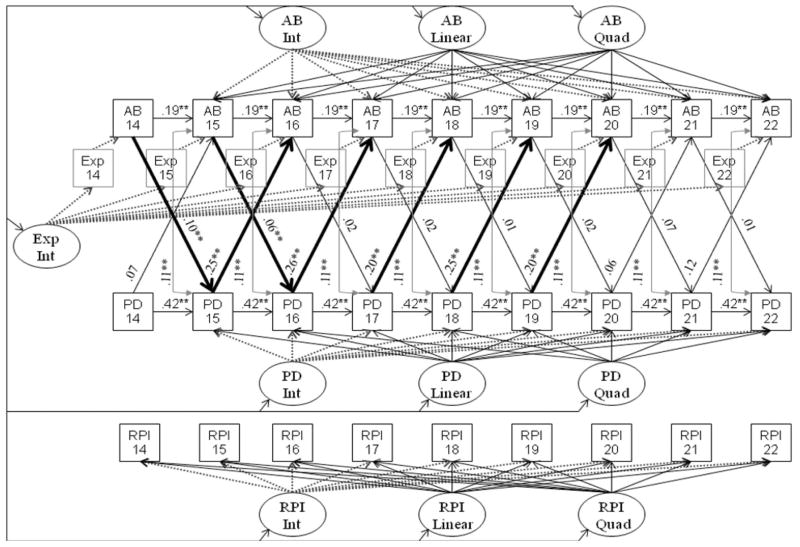Figure 1.
Autoregressive latent trajectory model. AB = antisocial behavior; PD = peer delinquency; RPI = resistance to peer influence; Exp = exposure time in the community compared with time incarcerated. Dashed line arrows are all constrained to 1. Significant cross-lag effects are shown in boldface. For all latent intercepts, items are fixed at 1. For all latent linear slopes, age 15 is fixed at 0, age 16 is fixed at 1, age 17 is fixed at 2, age 18 is fixed at 3, age 19 is fixed at 4, age 20 is fixed at 5, age 21 is fixed at 6, and age 22 is fixed at 7. For all latent quadratic slopes, age 15 is fixed at 0, age 16 is fixed at 1, age 17 is fixed at 4, age 18 is fixed at 9, age 19 is fixed at 16, age 20 is fixed at 25, age 21 is fixed at 36, and age 22 is fixed at 49. Correlations among latent intercepts and slopes are found in Table 2.

